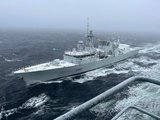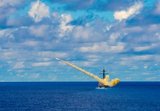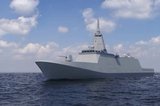HMNZS Te Kaha arrives for upgrade work
The Royal New Zealand Navy’s (RNZN) HMNZS Te Kaha Anzac-class frigate has arrived in Canada for the upgrade of its sensor and weapons systems, the New Zealand Ministry of Defence announced on 6 March.
The upgrade focuses on enhancing the frigate’s surveillance, combat and self-defence capabilities to extend its operational life to around 2030. The frigate will receive updated equipment and systems including combat management system, radar and underwater sonar.
Work will be carried out by Lockheed Martin Canada. The upgrade of the second frigate, HMNZS Te Mana, is scheduled to take place in 2019.
Ron Mark, Minister of Defence, New Zealand, said: ‘There is a significant programme of work to upgrade or replace New Zealand’s defence equipment that aims to maintain the safety of our military personnel and the country’s ability and readiness to deploy when needed, both in this country and overseas.
‘In the time the frigates have been operational New Zealanders have come to expect their involvement in constabulary and humanitarian, to combat roles as part of a multinational coalition. These contributions are valued by our international partners.’
More from Naval Warfare
-
![US Navy to acquire micro-uncrewed underwater vehicles for ISR and coastal data collection]()
US Navy to acquire micro-uncrewed underwater vehicles for ISR and coastal data collection
The Naval Supply Systems Command is seeking authorised resellers of JaiaBot uncrewed underwater vehicles and multivehicle pods. The platforms will support undergraduate education at the US Naval Academy.
-
![NATO tests use of “undetectable, jam-proof” laser communication in maritime scenarios]()
NATO tests use of “undetectable, jam-proof” laser communication in maritime scenarios
As part of its effort to better prepare its capabilities for operations in contested and congested scenarios, NATO evaluated a Lithuanian ship-to-ship terminal designed to not be susceptible to enemy interference.
-
![US Navy advances with the Harpoon Service Life Extension Programme]()
US Navy advances with the Harpoon Service Life Extension Programme
The US Navy plans to improve Harpoon’s anti-ship and land attack capabilities by equipping the missiles with sensors and technologies required for succeeding in future battlespace.
-
![Mitsubishi eyes future with Australia’s Mogami selection]()
Mitsubishi eyes future with Australia’s Mogami selection
With Australia’s selection of the Mogami-class for Project Sea 3000, Mitsubishi is investigating local production in the next decade as potential export opportunities emerge.






















